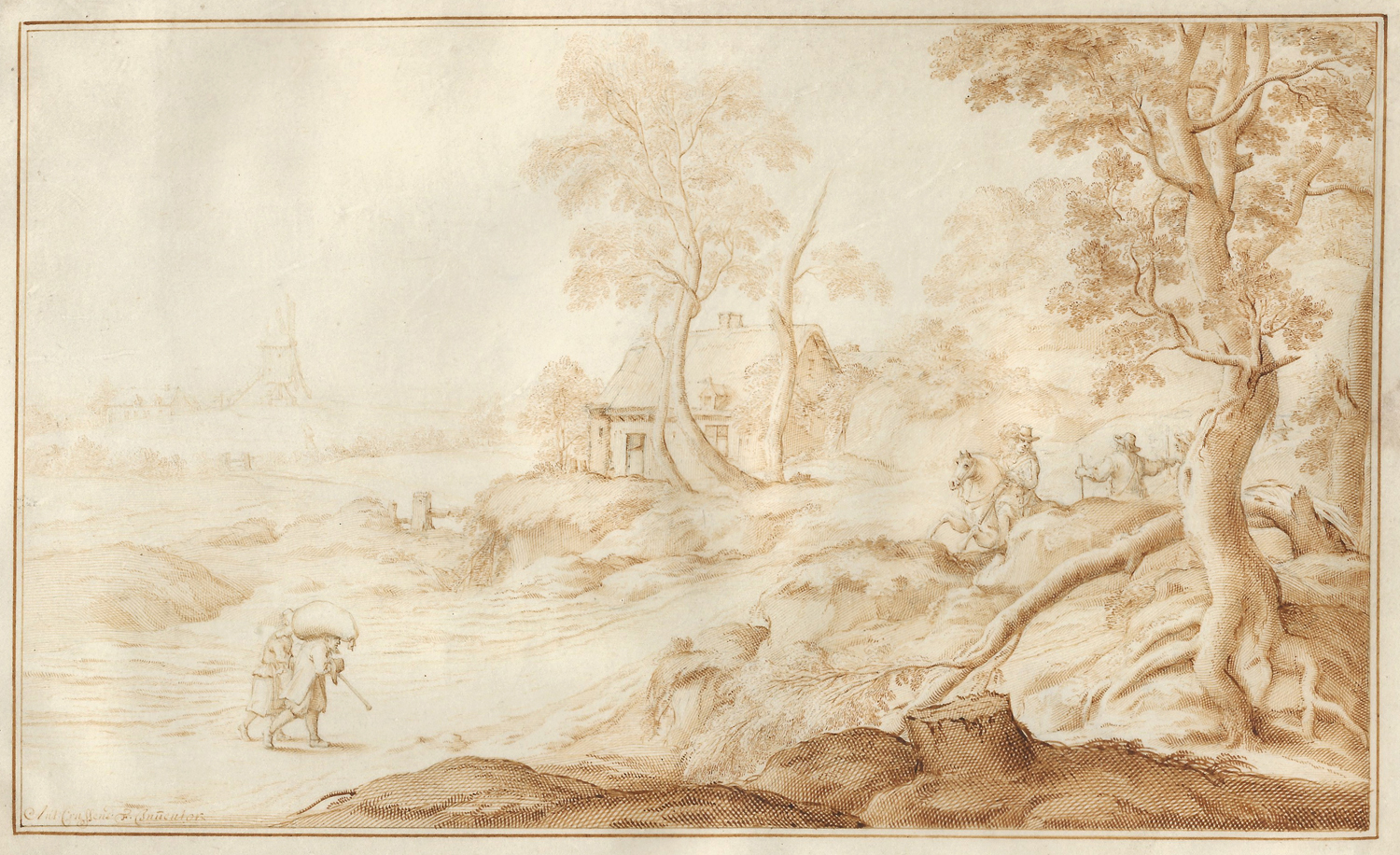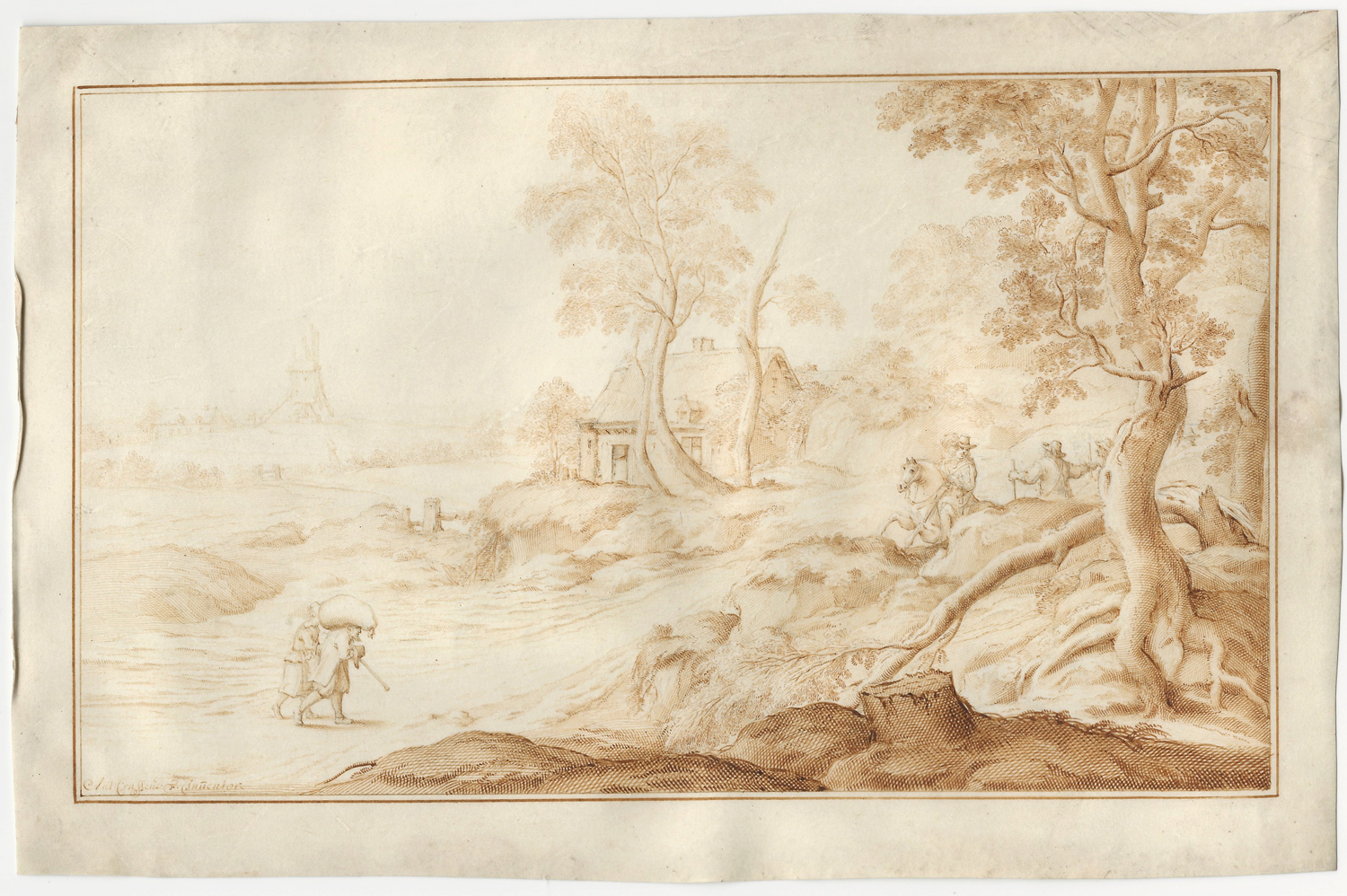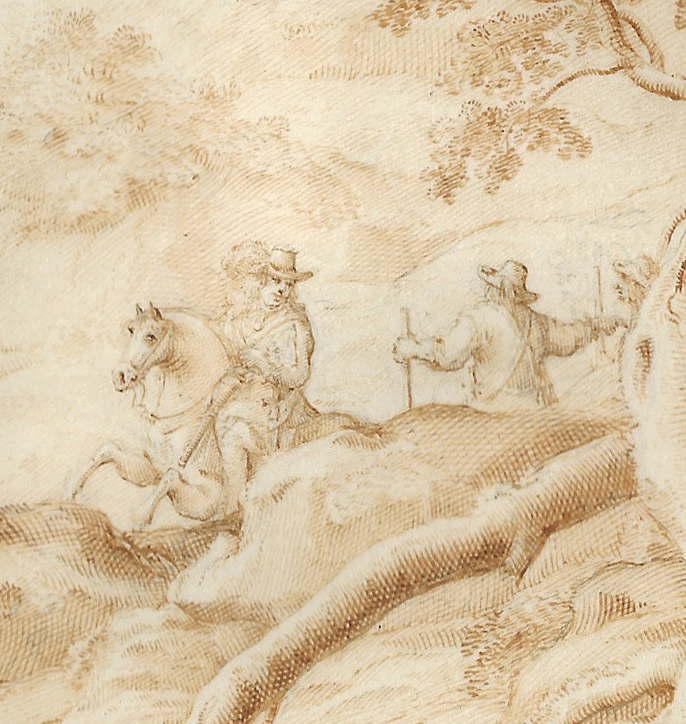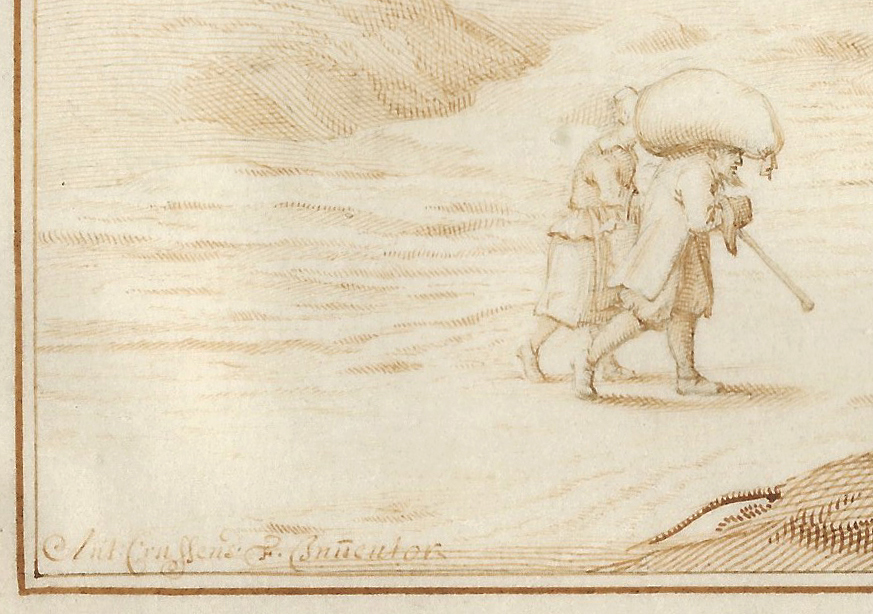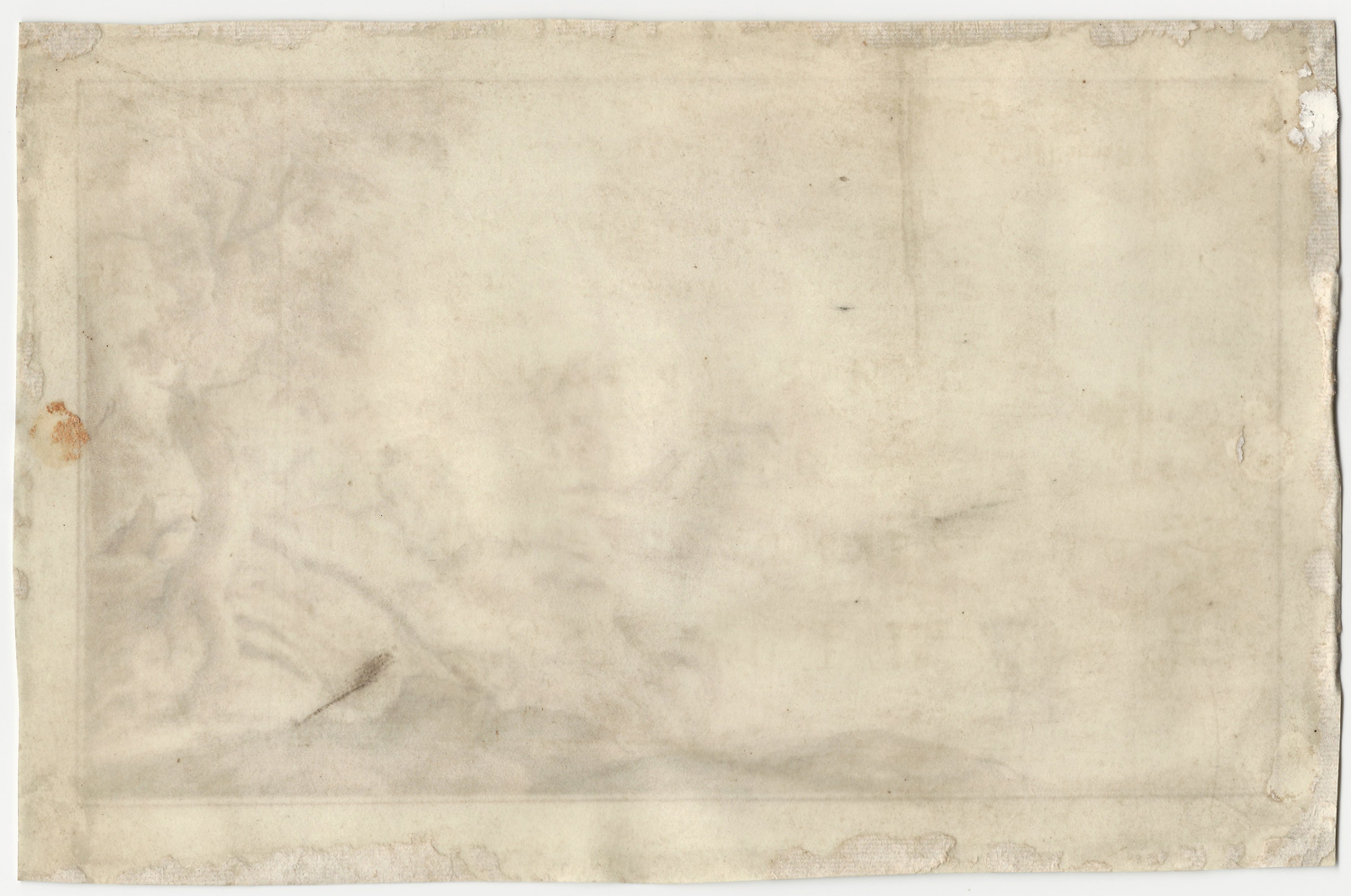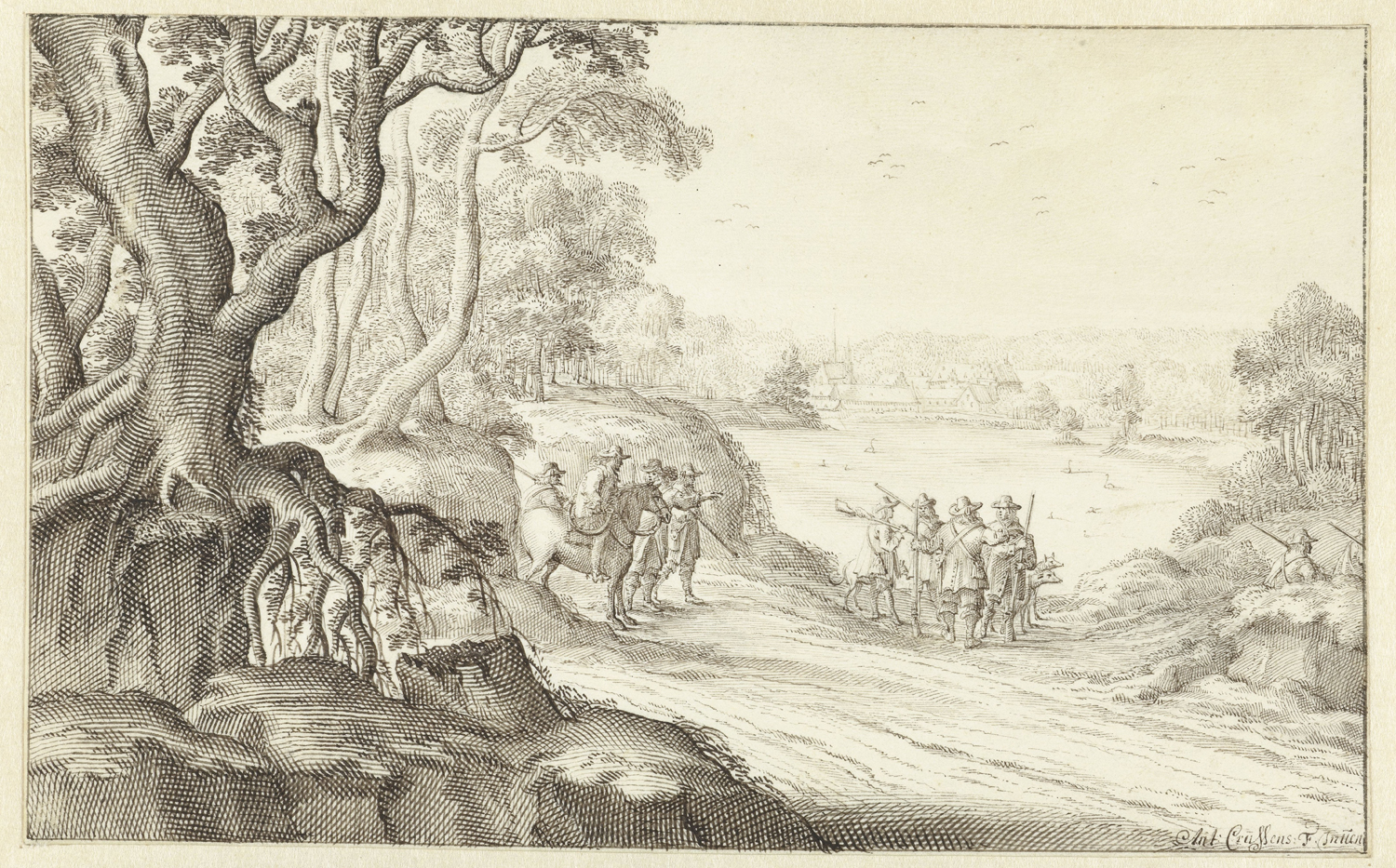ANTHONIE CRUSSENS (Southern Netherlands c. 1630 – c. 1665)
Anthonie Crussens (Southern Netherlands c. 1630 – c. 1665)
Landscape with a Horseman and a Windmill in the Distance
Pen and brown ink on vellum, brown ink framing lines, sheet size 181 x 282 mm (7.1 x 11.1 inch); image size 153 x 255 mm (6 x 10 inch)
Signed ‘Ant. Crussens. F. Inûentor’ (pen and brown ink, lower left)
Provenance
Private collection, Belgium
Literature
Charles Dumas in exh. cat. Virginie Dhaene (ed.), European Old Master Drawings from the Groeningemuseum (working title), Bruges (Groeningemuseum) 2018-19, entry on Crussens, note 4 (together with three other addenda to Crussens’s oeuvre)
***
Little is known about the life of the amateur artist Anthonie Crussens, who was active from 1652 to 1665 in Brussels.1 In 1987 only seventeen drawings by the arstist were known, while 35 works were known in 2000 and 58 works are known today.2 Crussens specialised in drawings in pen and brown ink, executed on vellum, and are frequently signed. Although he is thought to have been an amateur, Crussens’s finely executed drawings must have been made for specialised collectors of ‘papierconst’ (paper art). Some sheets may have been framed and glazed, as was not uncommon for drawings on vellum.
Although his surviving oeuvre is relatively small, many of the leading museums and print rooms include drawings by Crussens among their holdings, which shows the esteem in which his works were held, even before he was rescued from obscurity by the publications of Charles Dumas. In fact well over half of all drawings currently known are in museum collections, including the Rijksprentenkabinet of the Rijksmuseum, Amsterdam, the Groeningemuseum, Bruges, the Uffizi, Florence, the Metropolitan Museum in New York, the Hermitage in St Petersburg, the Staatliche Museen in Berlin, the Pushkin Museum in Moscow, the Albertina in Vienna and the Staatliche Graphische Sammlung in Munich.
Our sheet is particularly well preserved, and exceptionally includes wide margins outside the framing lines, which must have been applied by Crussens himself – like with prints, it is rare for the blank margins outside the framing lines to survive, as the sheets were generally cut down. Crussens generally chose as his subjects either genre scenes with large figures in the manner of David Teniers, or landscapes with hunters and travellers, more often than not with an imposing tree as repoussoir motif in the foreground, as in our drawing. In terms of handling and composition our carefully executed sheet can be compared to a drawing of Hunters in a Hilly Landscape in the Rijksmuseum (see fig.), which is identically signed to our sheet.3
I am extremely grateful to Charles Dumas for confirming Crussens’s authorship of this drawing and for sharing his entry in the forthcoming catalogue of drawings in the Bruges Groeningemuseum.4
SOLD TO A PRIVATE COLLECTOR, BY WHOM GIVEN TO THE METROPOLITAN MUSEUM OF ART, NEW YORK
1. For the artist, see: Charles Dumas, ‘Anthonie Crussens, een vergeten amateur’, Delineavit et Sculpsit, No. 22 (November 2000), pp. 1-46 and Ch. Dumas, ‘Anthonie Crussens: aanvullingen op de catalogus gepubliceerd in 2000’, Delineavit et Sculpsit, No. 37 (August 2014), pp. 22-37.
2. Charles Dumas in forthcoming exh. cat. Virginie Dhaene (ed.), European Old Master Drawings from the Groeningemuseum (working title), Bruges (Groeningemuseum) 2018-19, entry on Crussens.
3. Pen and brown-grey ink, on vellum, 115 x 185 mm, inv. no. RP-T-1898-A-3550.
4. Email correspondence, 14 December 2017.
